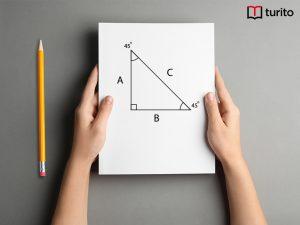Read the following idea/expression carefully:
Example 1:
- This place is like the Garden of Eden.
What did you understand by the above expression?
____________________________________________________________________________________________________
(Student’s Response)
Wow!!! You guessed it so correctly….
The Garden of Eden was the paradise God made for Adam and Eve.
Therefore, the expression, “This place is like a Garden of Eden” is an allusion and the source of this allusion is from Bible.
Therefore, it is an example of a Biblical allusion.
Let us read the expression carefully
Example 2:
- When she lost her job, she acted like a Scrooge, and refused to buy anything that wasn’t necessary.
What idea do you get from the above expression?
_________________________________________________________________________________
(Student’s Response)
Yes, you got it right…
It is an allusion. Scrooge was an extremely stingy character from Charles Dickens, A Christmas Carol.
This is a literary allusion.
Allusions are not only in expression or ideas but it can be in picture too.
What is an allusion?
An allusion is an expression designed to call something to mind without mentioning it explicitly; an indirect or passing reference. It is not the same as the word illusion.
Illusion is when your eyes play tricks on you and you think you see something that is not there.
Example:
- “Don’t act like a Romeo in front of her.”
- “This place is like the Garden of Eden”
Where can I see and hear an allusion?
We can see and hear allusions in the following areas:
- Commercials
- Movies
- Books
- The store
- School
- The mall
- Just about anywhere
Why do writers use it?
Allusion can help people see unique connections between two ideas. The reference can help the audience better understand a subject.
Allusions can also be surprising and funny and are a favorite tool for writers to prove their extensive knowledge of many topics.
Sources of Allusion
Allusions are all around us. People use them every day. Most allusions come from one of the following sources:
- The Bible
- Mythology
- History
- A culture
- Shakespeare
- Literary
A Biblical Allusion
A reference to a character, story, place, or scripture from the Bible.
Example:
- Joseph was a Good Samaritan yesterday when he helped the lady start her car.
This refers to the Biblical story of the Good Samaritan.
Mythological Allusions
A mythological allusion is when a piece of art, literature, or music hints at a piece of mythology. This mythological allusion could be with regard to the country’s indigenous culture or a reference to another culture’s mythology.
An allusion to the Greek warrior Ajax, who was known for his skills in battle in Homer’s book, The Iliad.
A Historical Allusion
A reference to a historical person, place, or event.
Example:
- This is an allusion to Abraham Lincoln. If you were not familiar with the US presidents, you might not know who Honest Abe is.
A Cultural Allusion
A reference to a person, place, event, or thing within a specific culture.
If someone is not familiar with that culture, he or she will probably not understand the allusion.
Some cultural allusions will overlap with historical, biblical, literary, Shakespearean, and mythological allusions.
Example of a Cultural Allusion:
- You’re killing me Smalls. Quote from the movie The Sandlot.
- He’s as jolly as Old Saint Nick. – a reference to Santa Claus.
A Shakespearean Allusion
A reference to one of William Shakespeare’s characters or a reference to one of his quotes.
Example 1:
- Friends, Romans, Countrymen, lend me your ears.
(Quote from Julius Caesar)
Example 2:
- Romeo, Romeo, wherefore art thou Romeo?
(Source: Romeo and Juliet)
Example:
- He was a real Romeo with the ladies.
Literary Allusion
I was surprised his nose was not growing like Pinocchio’s.
This refers to the story of Pinocchio, where his nose grew whenever he told a lie. It is from The Adventures of Pinocchio, written by Carlo Colloid.
The Purpose of Allusion:
- 1.Allusion can be a very powerful technique when you are writing a novel.
- In fiction, it is an excellent way to show, not tell in any writing.
- If you write any type of mystery or crime thriller novel, allusion may help the audience piece together the story while they read.
- Indirect references to past or future events in a story can help with foreshadowing and build up suspense.
Here are some of the reasons how allusion generally acts in any writings:
- Stronger connection to the audience.
- It builds authority and trust.
- Adds meaning and symbolism.
- Works for a variety of writing styles.
- Show, don’t tell or allow the readers to feel and visualize the scene – not tell them exactly what is happening.

Related topics
Exploring the World of Adjectives: Types, Usage, and Examples
What are Parts of Speech? Parts of speech determine words’ grammatical and semantic position in a sentence. Activity time The parts of speech are nouns, adverbs, conjunctions, pronouns, interjections, adjectives, articles, prepositions, and verbs. Identify the parts of speech of the underlined words in the following sentences. White- Adjective Big- Adjective Exciting- Adjectives New- […]
Read More >>Memoir Writing: Basic Elements, Structures, and Types
Memoir: A memoir is a narrative written from an author’s perspective about a particular facet of his/her own life. ‘Memoir’ word comes from the French word ‘memoire’, which means ‘memory’ or ‘reminiscence’. Example Night: Elie Wiesel gives an account of how he survived his teenage years at Auschwitz and Buchenwald concentration camps during World War […]
Read More >>Identification of Main Idea in Fiction and Non-fiction
Every story or paragraph or non-fictional text has at least one main idea. The MAIN IDEA is what the text is mostly about. (It is backed up or supported by SUPPORTING DETAILS) Before discussing how to find the main idea, we shall first look at TOPIC. Can you define a topic? A topic can be […]
Read More >>Writing an Article: Structure and Essential Tips
What is an article? Structure of Article Writing : Title : Draw the attention of readers with an attractive title and indicate the main topic of the article Introduction : Attract the reader’s attention with a sentence that gives a general presentation of the topic. Main Body : Between these sentences, the body should do […]
Read More >>Other topics











Comments: